May is Pennsylvania Beef Month, a chance to explore the amazing beef produced by family farmers right here in our state! There’s no better time to celebrate with a delicious recipe that puts beef front and center on your family’s table. Beef is super-versatile, budget-friendly, packed with protein and a real crowd-pleaser!
There are numerous great cuts of beef to choose from, and each cut of meat has preparations that allow you to show off its best qualities. In fact, there are so many options that, even for savvy home cooks, it can be a bit overwhelming when you’re at your local market’s meat counter. Which cut is best for grilling, roasting, braising? What is best for a steak salad, and can I use those leftovers to make steak tacos?
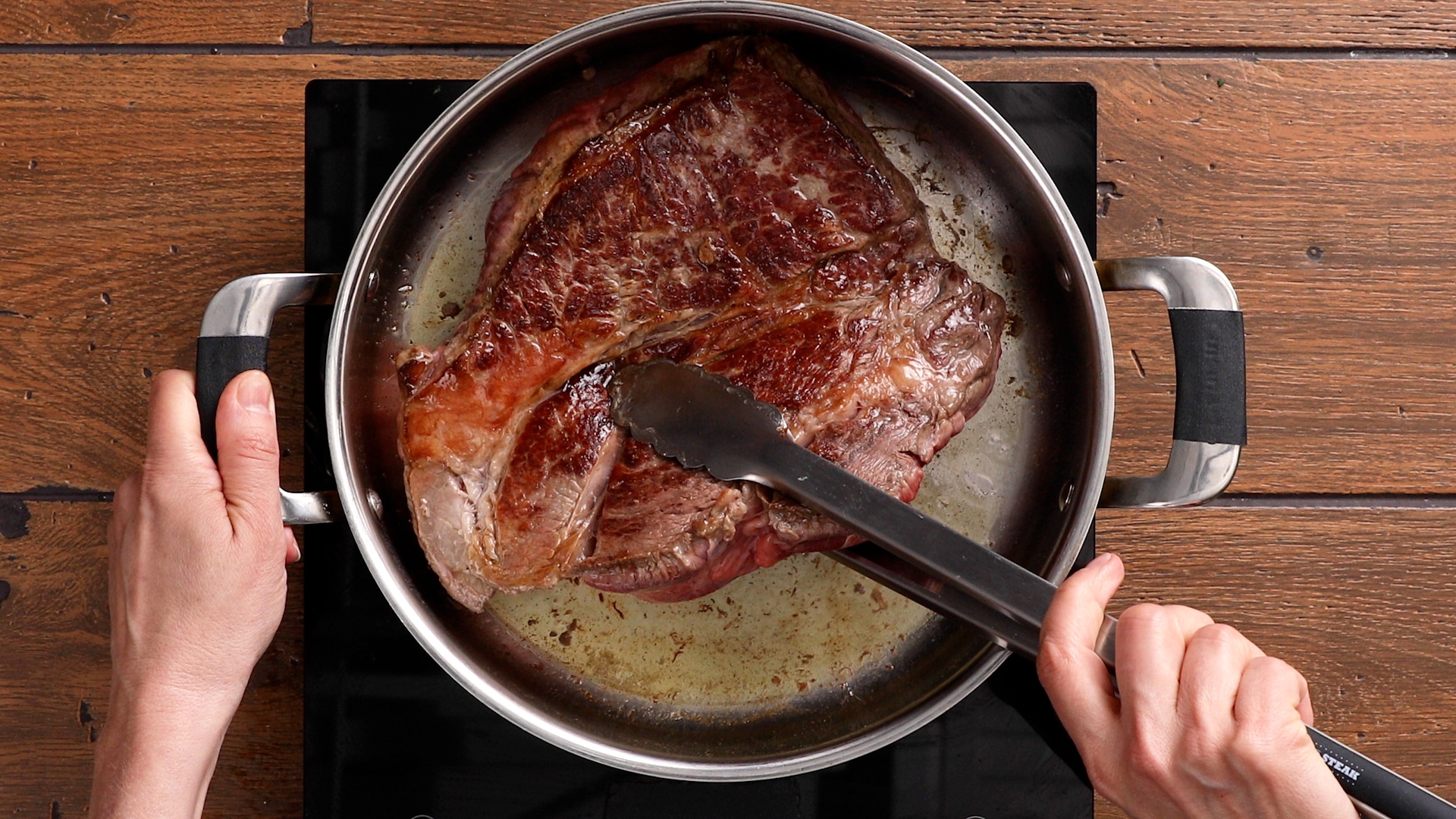
Our local beef experts, the Pennsylvania Beef Council is passionate about beef in all of its tasty forms — from ribeye to roasts and everything in between — and they asked us to put together a foolproof guide to a dozen popular cuts of beef. Use it as a reference when you’re shopping for groceries, or when you’ve got a beautiful piece of beef in the fridge and you’re not sure how to best cook it.
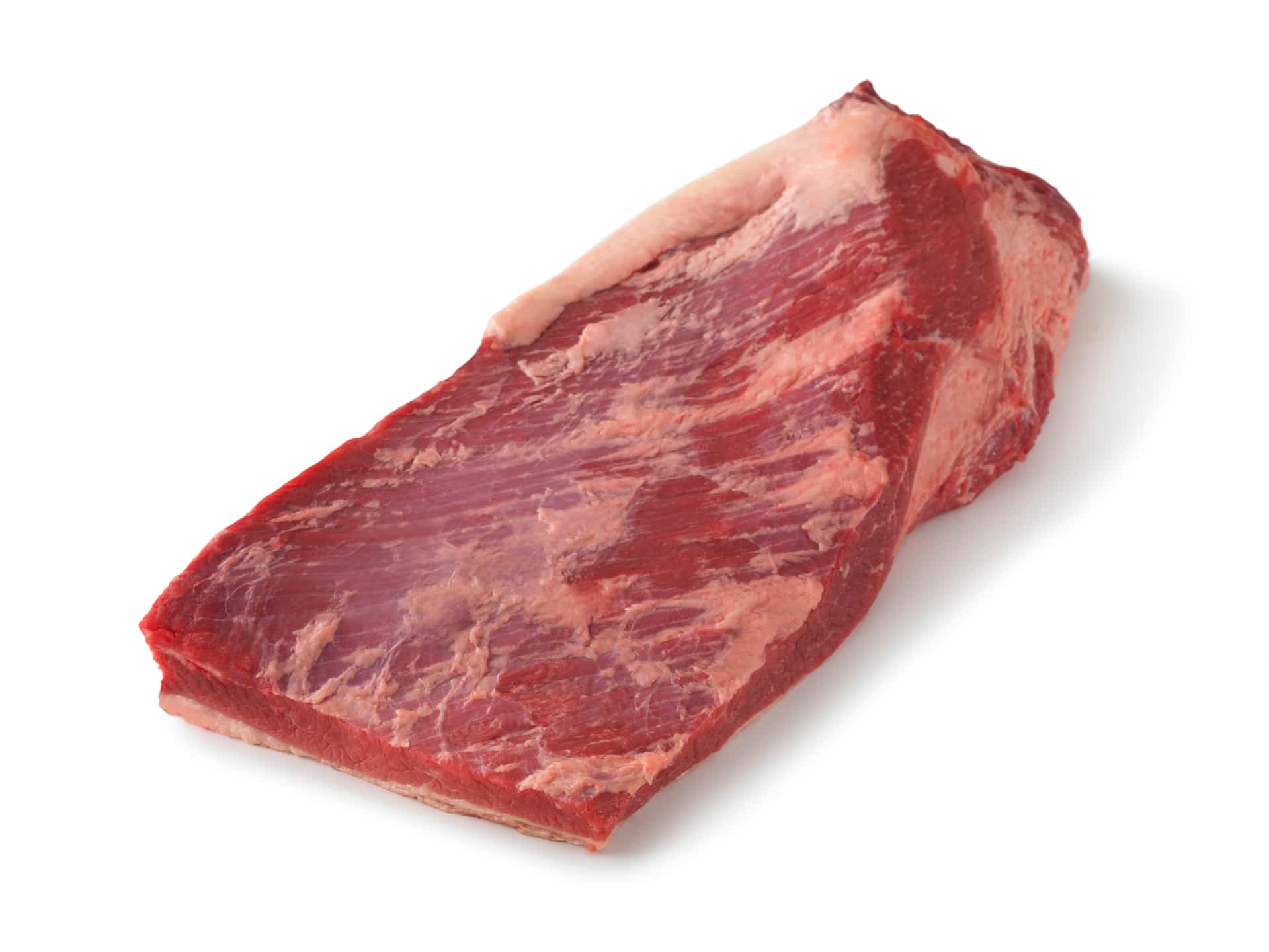
Brisket
Brisket: A cut of meat from the breast or lower chest of the steer.
- Qualities: Robust beefy flavor and some marbling, which improves the texture during cooking
- Best cooking methods: Braise, smoke, roast, pressure cook
- Tip: This is a weight-bearing muscle with a lot of connective tissue, so proper cooking (usually slowly with low heat) is key to tenderize it.
- 3 recipes to try: Wasabi Beer Braised Brisket, Classic Braised Beef Brisket, Classic Smoked Beef Brisket
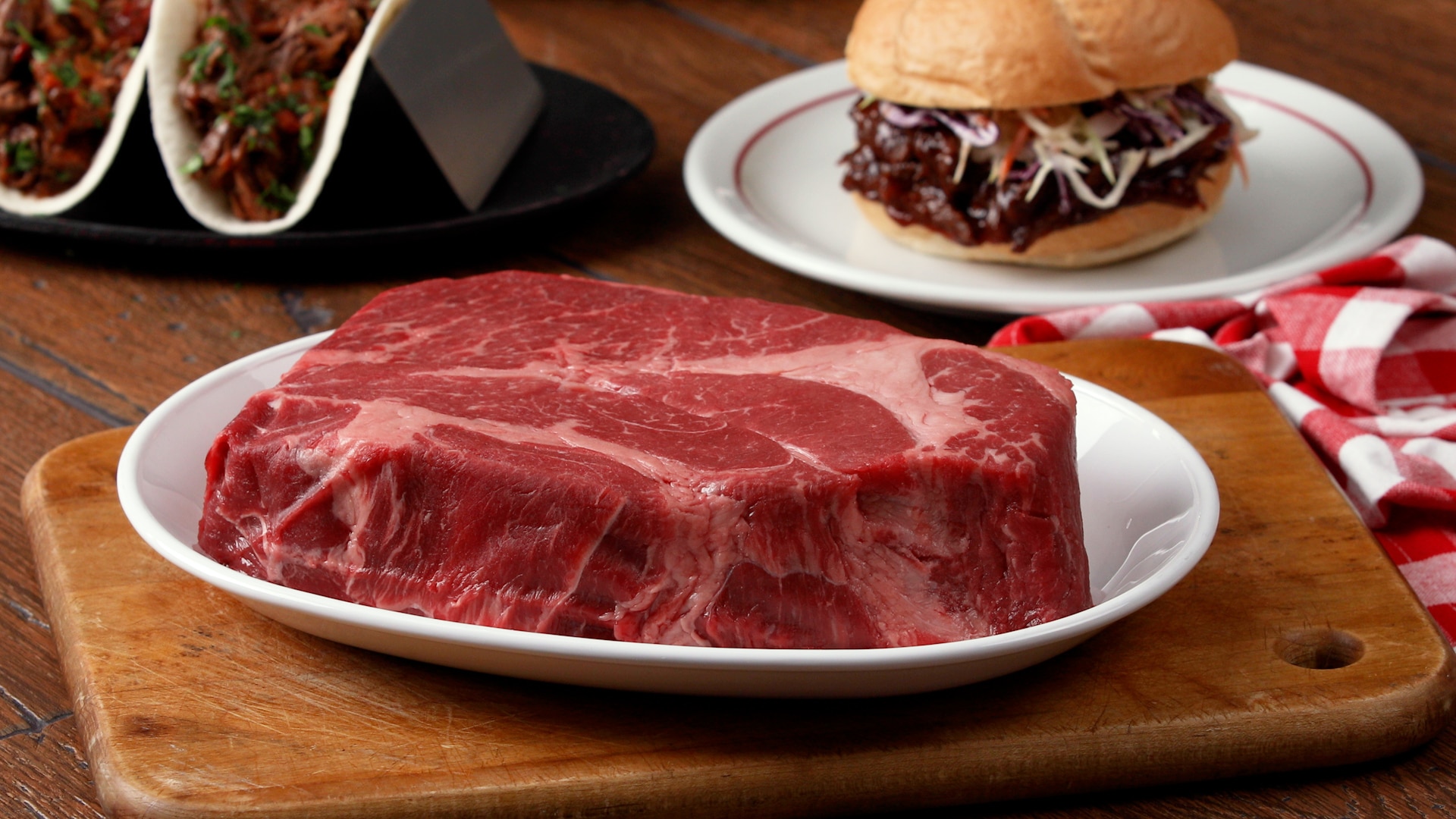
Chuck Arm Roast
Chuck Roast (including Chuck Tender, Chuck Eye and Chuck Arm Roasts):
- Qualities: Rich beefy flavor, rectangular cut; a.k.a. Pot Roast
- Best cooking methods: Braise, roast, bake, stew
- Tip: This is an economic cut of beef, great for feeding a crowd! It also is a good cut if you make your own shredded or ground beef at home.
- 3 recipes to try: Yankee Beef Pot Roast, Garlic and Tri-Pepper Garlic Beef Roast, Provencal Beef Stew
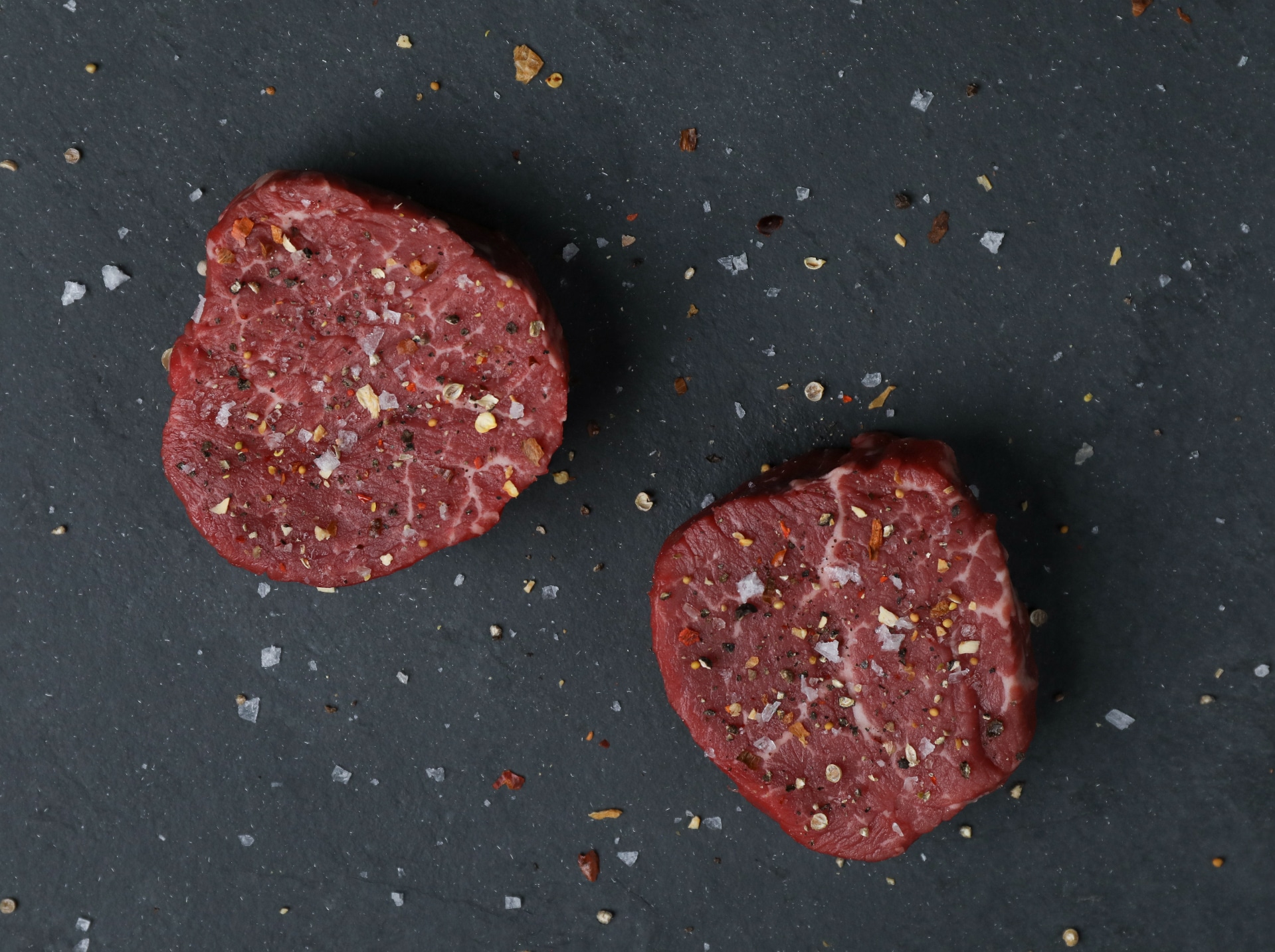
Filet Mignon
Filet Mignon:
- Qualities: Extremely tender; lean yet very juicy with a buttery texture and subtle flavor; sold boneless and usually in a round cut; a.k.a. Tenderloin Steak
- Best cooking methods: Grill, pan-broil in skillet, broil, sous vide
- Tip: Because filet mignon is so lean, it is often wrapped in bacon to add more fat and helps the meat retain moisture.
- 3 recipes to try: Tenderloin Steaks with Horseradish Cream, Filet Mignon with Herb Butter Sauce and Mushrooms, Beef Filets with Ancient Grain & Kale Salad
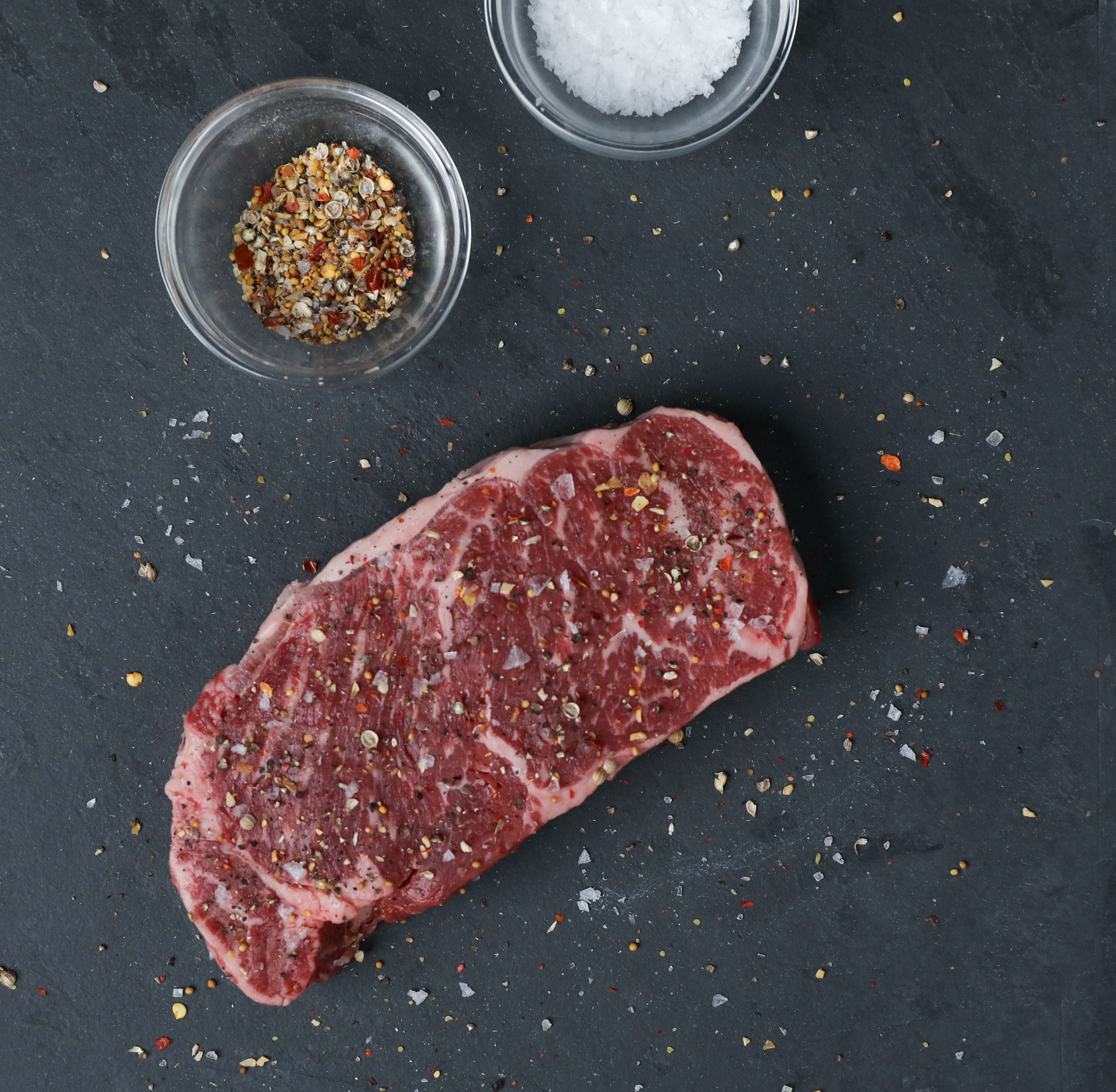
Flank Steak
Flank Steak:
- Qualities: Lean and tender, with a long and flat shape; intense flavor; potentially tough texture
- Best cooking methods: Broil, braise, marinate and grill, stir-fry
- Tip: For extra-tender meat, make thin slices across the grain.
- 3 recipes to try: Quick Beef Fajitas, Balsamic Marinated Flank Steak, Thai Beef Wok N’ Roll-Ups
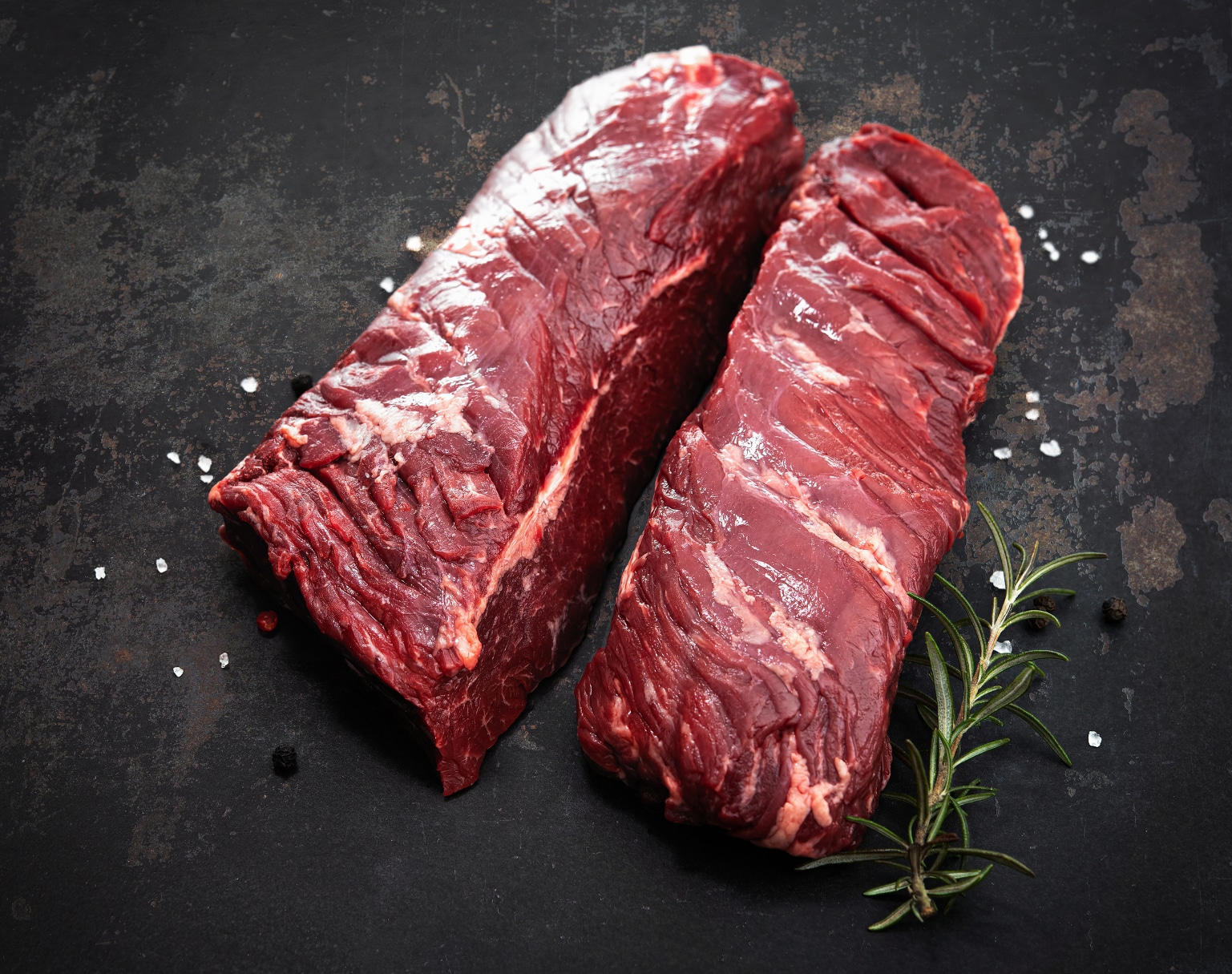
Hanger Steak
Hanger Steak:
- Qualities: A thicker cut, with full beef flavor and a somewhat coarse texture, though it can become very tender when properly cooked; a.k.a. Hanging Tenderloin or Butcher’s Steak
- Best cooking methods: Marinate and grill, broil
- Tip: For the best texture, cook hanger steaks over moderate heat to an internal temperature of 145 degrees Fahrenheit.
- 3 recipes to try: Marinated Grilled Hanger Steak, Pan-Grilled Beer-Marinated Hanger Steak, Chile-Glazed Hanger Steak
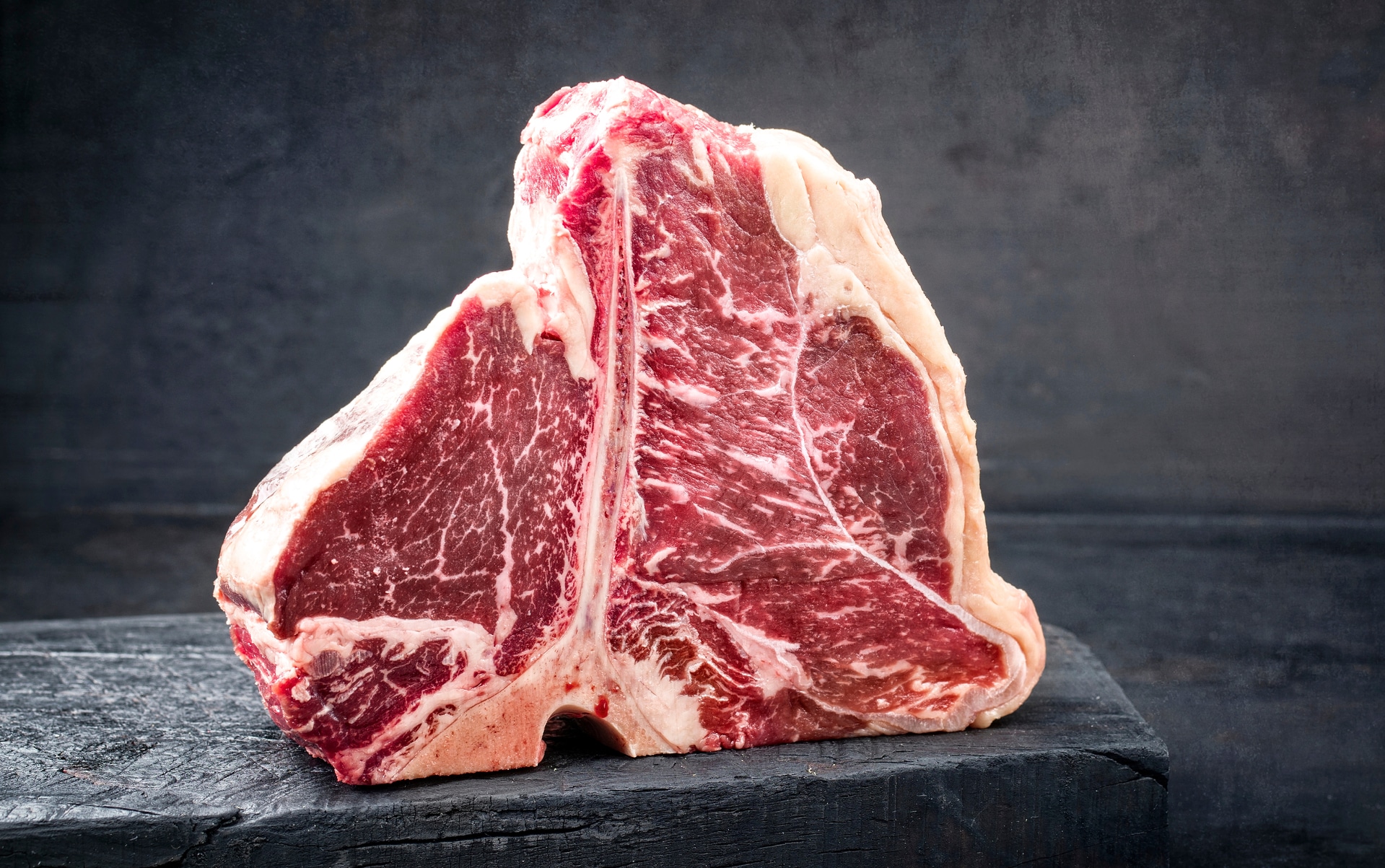
Porterhouse Steak
Porterhouse Steak:
- Qualities: A cut from the rear end of the short loin, which includes the Filet Mignon and the New York Strip; generally a large cut that can feed two people; a.k.a. King Steak
- Best cooking methods: Grill, skillet, broil
- Tip: Allow steak to come to room temperature before seasoning, and allow the steak to rest at least 5 minutes after cooking before slicing.
- 3 recipes to try: Grilled Porterhouse Steaks with Garlic-Herb Peppercorn Crust, Grilled Beef Porterhouse Steaks with Colorful Peppers, Perfect Porterhouse Steak
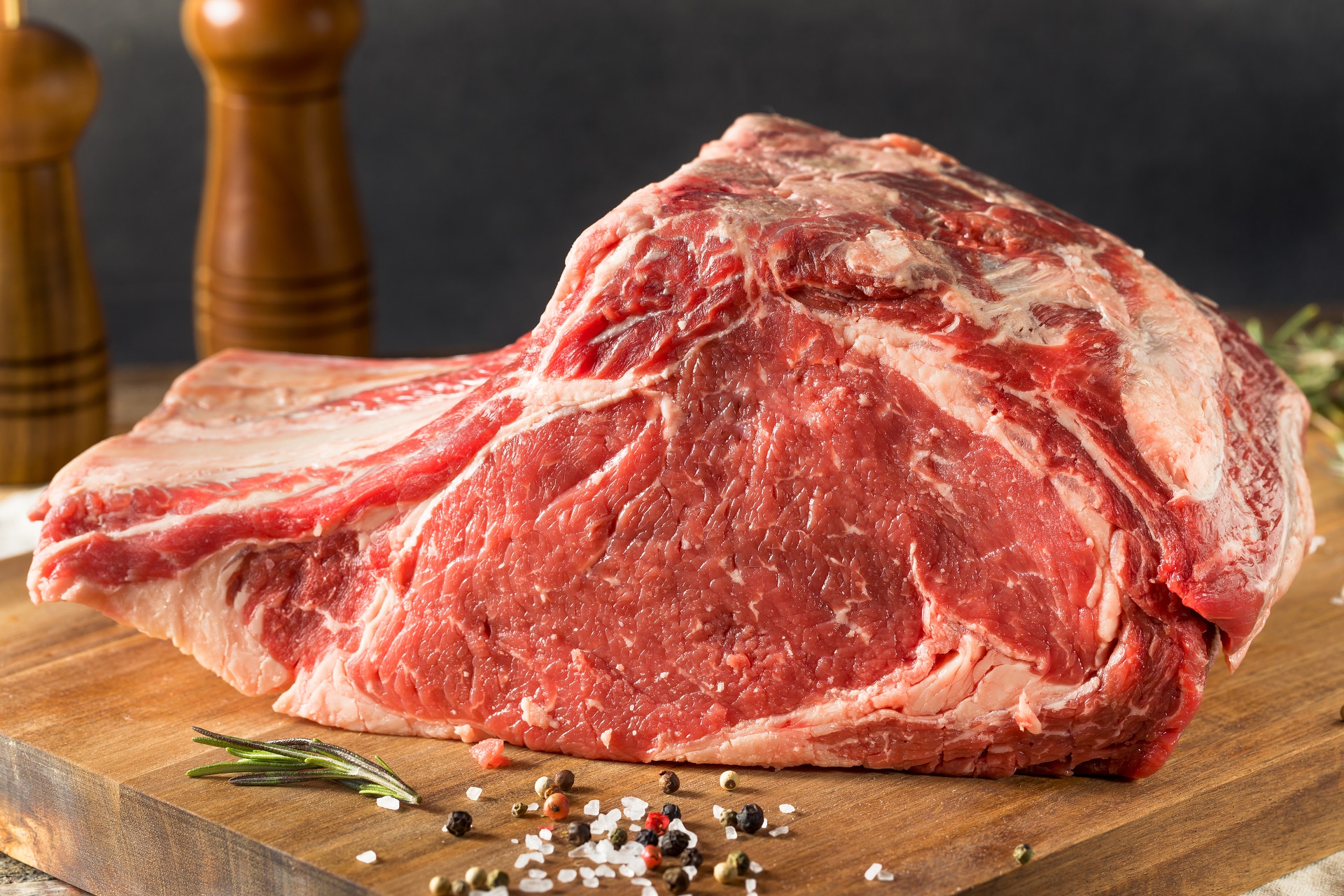
Prime Rib Roast
Prime Rib Roast:
- Qualities: Rich and flavorful, with good marbling and a notable fat cap; a great special-occasion roast to feed a crowd; a.k.a. Standing Rib Roast
- Best cooking methods: Slow roast with dry heat, grill
- Tip: This cut is often roasted “standing” on the rib bones so that the meat does not touch the pan.
- 3 recipes to try: Peppered Rib Roast with Garlic Sauce, Smoked Herb Rib Roast, Maple-Glazed Rib Roast with Roasted Acorn Squash
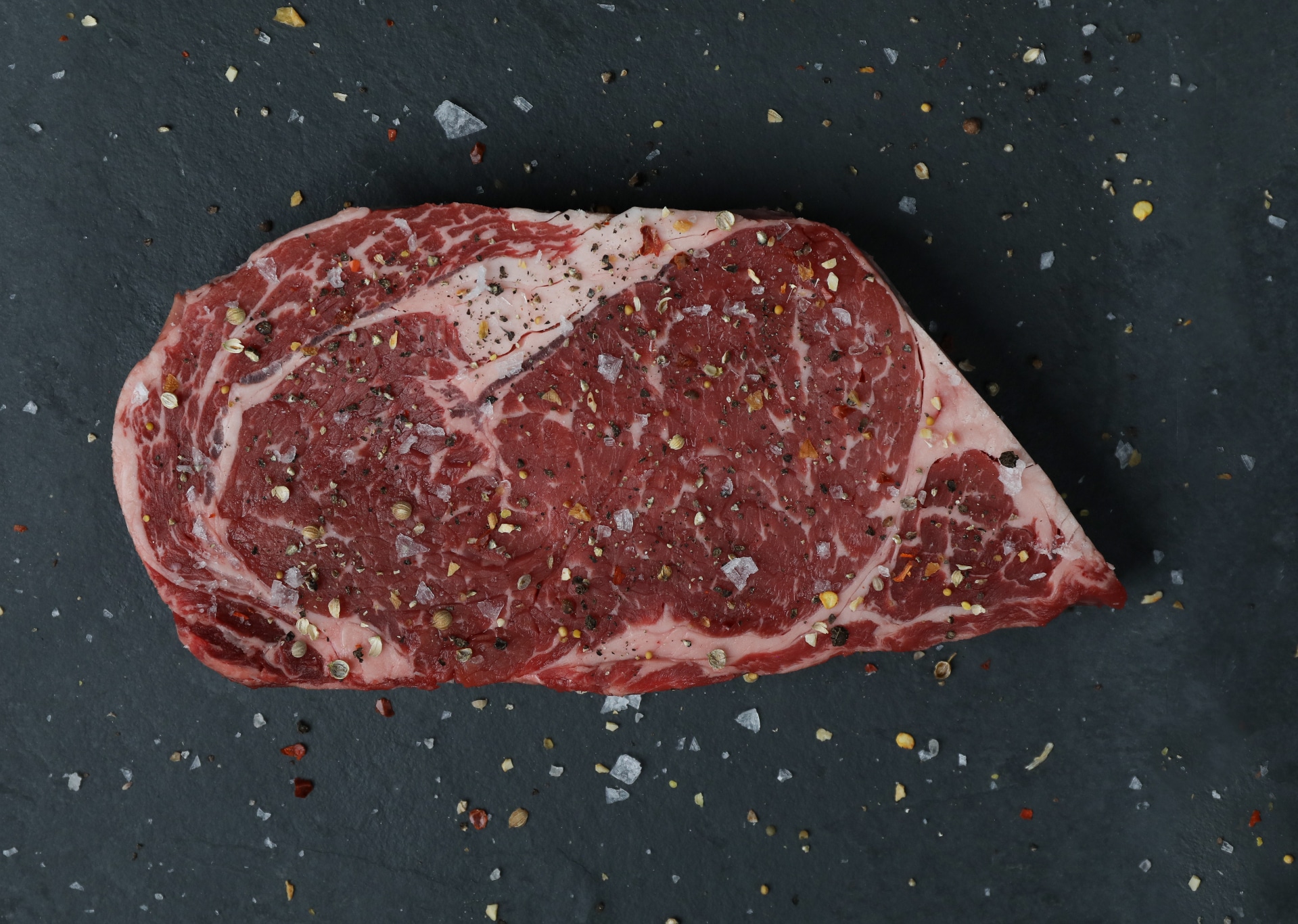
Ribeye
Ribeye Steak:
- Qualities: Juicy, rich and full-flavored with great marbling, this cut is actually a slice off of a prime rib roast; sold bone-in. A large and impressive cut.
- Best cooking methods: Grill, skillet to oven, broil
- Tip: Cook ribeye to an internal temperature of at least 145 degrees Fahrenheit to allow enough time for the fat to render into the meat, for best texture and flavor.
- 3 recipes to try: Pineapple-Soy Glazed Beef Steaks, Ribeye Steaks with Fresh Tomato Tapenade, Ribeye Steaks with Blue Cheese Butter and Mushrooms
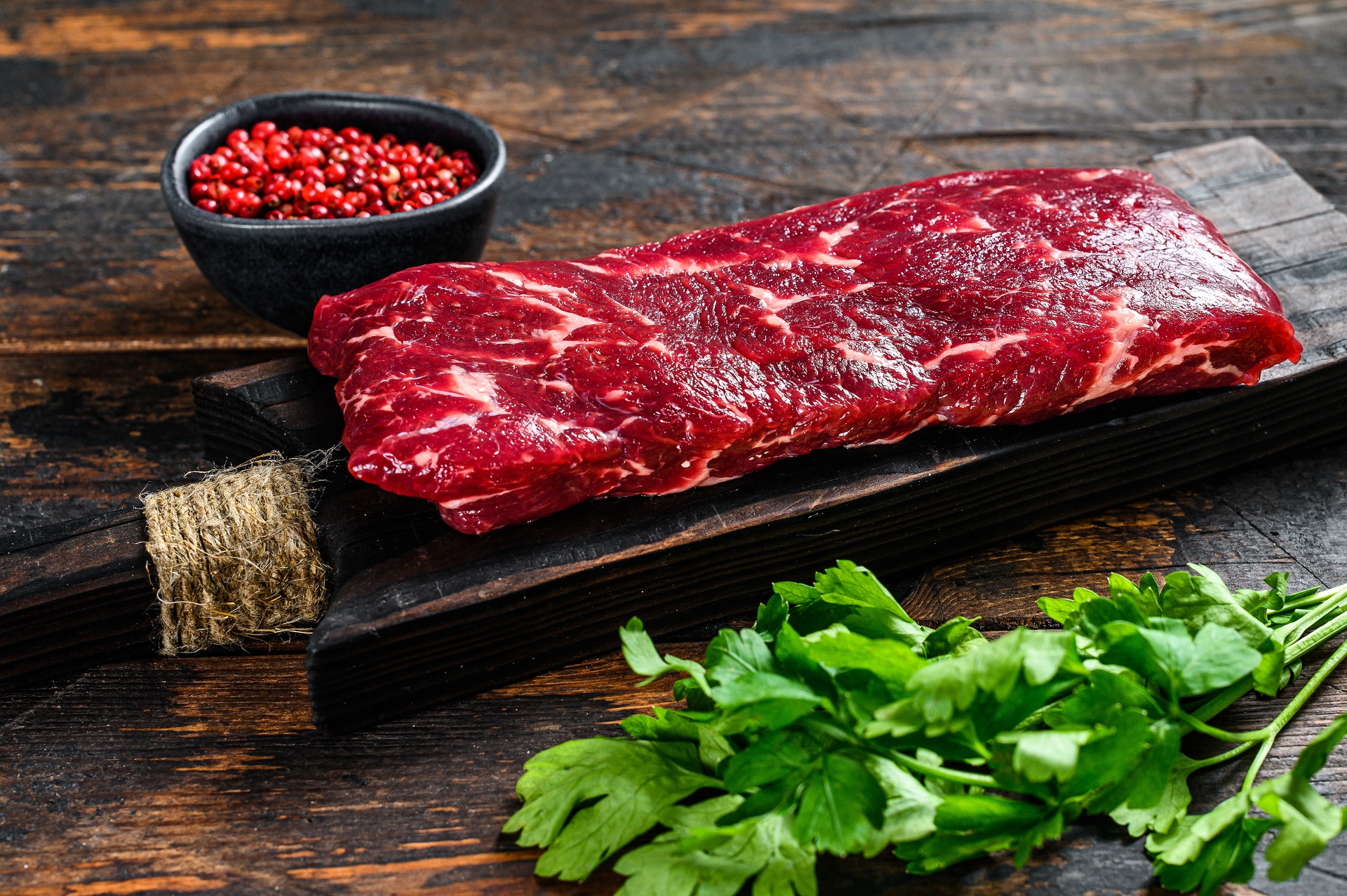
Skirt Steak
Skirt Steak (Outside & Inside Cuts):
- Qualities: A thin, coarse, flavorful cut, best for marinating and cooking over high heat
- Best cooking methods: Grill, skillet, broil
- Tip: Skirt steaks work particularly well for fajitas and stir-fries; always slice across the grain
- 3 recipes to try: Southern Skirt Steak Benedict, Tex-Mex Steak Tortas, Jamaican-Style Jerk Steak Bowl

Strip Steak
Strip Steak:
- Qualities: Thick, tender cut with a robust flavor
- Best cooking methods: Grill, skillet, broil
- Tip: Look for well-marbled steaks that are between 1 and 1.5 inches thick.
- 3 recipes to try: Chimichurri-Marinated Strip Filets, Ginger-Maple Steak with Napa Cabbage and Grilled Onions, Asian Strip Filets with Soba Noodle and Vegetable Salad
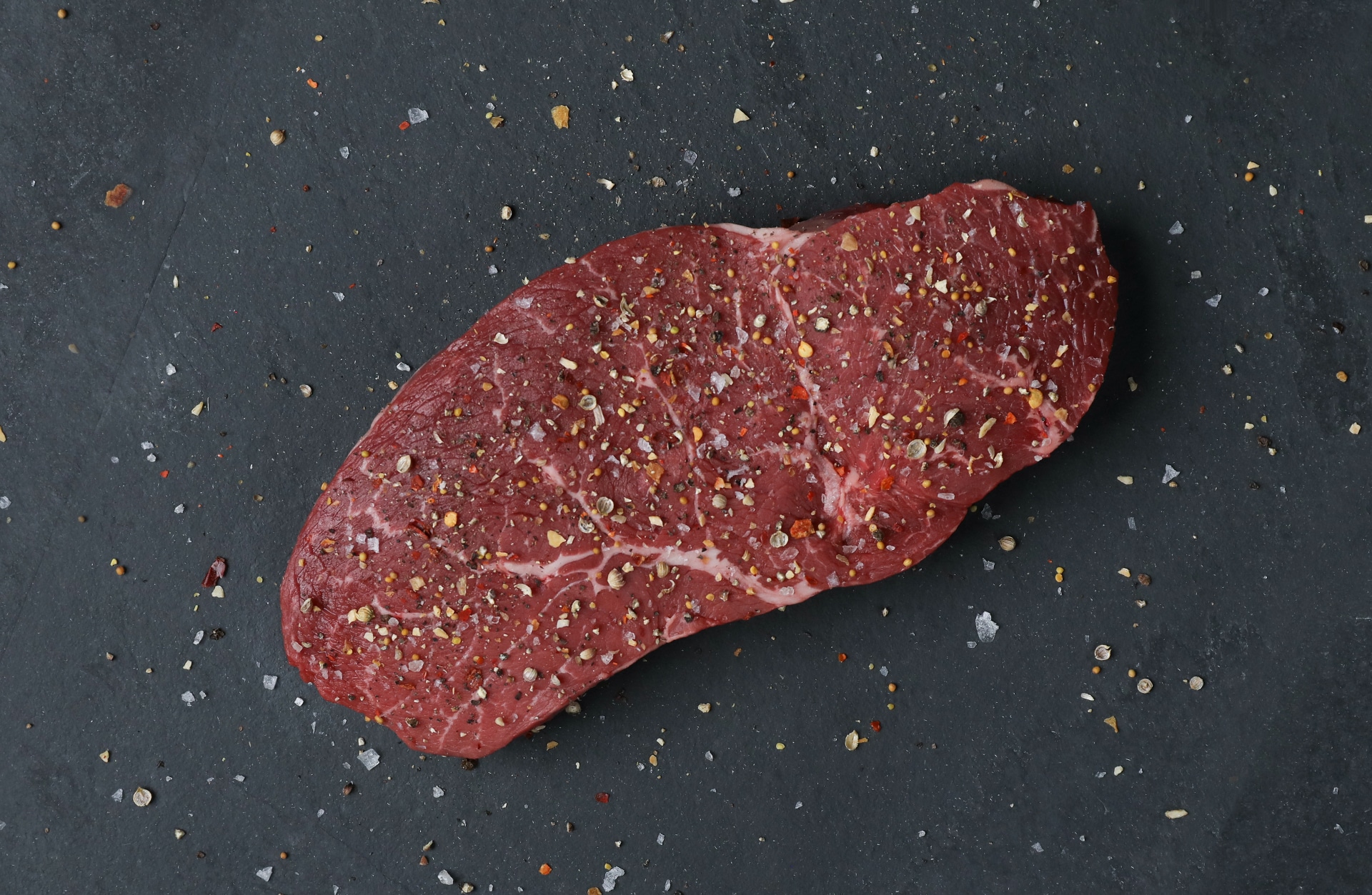
Top Round Steak
Top Round Steak:
- Qualities: From the top of the rump area of the steer; inexpensive, lean and flavorful thick cut; a.k.a. London Broil
- Best cooking methods for roast: Roast, braise, sous vide
- Best cooking methods for steak: Grill, skillet, stir-fry, broil
- Tip: For improved tenderness, slice thinly across the grain.
- 3 recipes to try: Herb-Crusted Beef Roast with Pistachio Leek Pesto, Classic London Broil, Greek Beef Salad
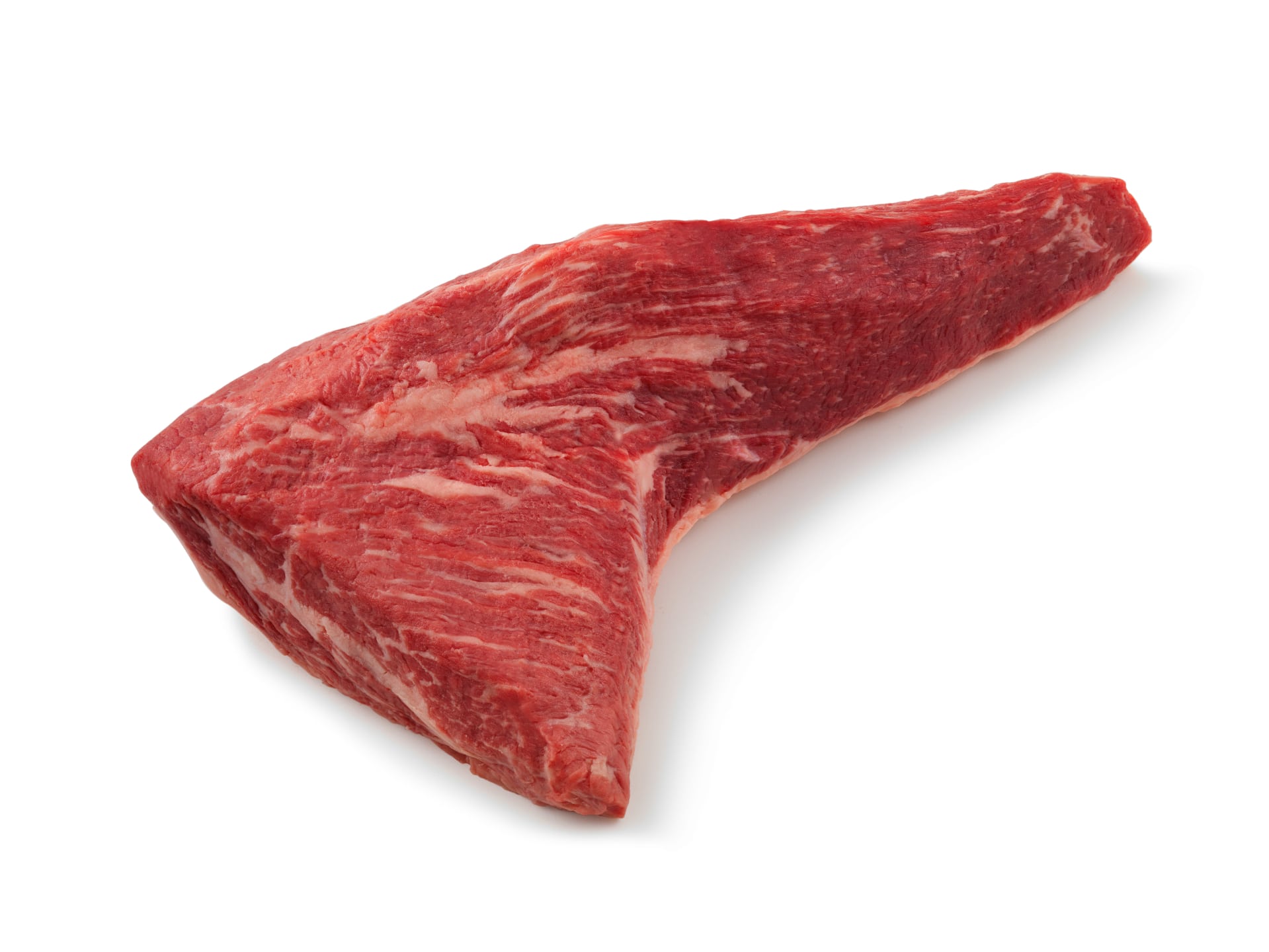
Tri-Tip Steak
Tri-Tip Steak:
- Qualities: Triangular cut that gives the steak its name; boneless, lean and fairly tender with full beef flavor; a.k.a. Newport Steak
- Best cooking methods: Grill, skillet, stir-fry, broil
- Tip: Wrapping a tri-tip steak in aluminum foil is a great way to ensure tenderness while slow cooking it on the grill.
- 3 recipes to try: Mu Shu Steak & Apple Wraps, Cali-Caribbean Steak Street Tacos, One-Pan Roasted Beef Tri-Tip & Brussels Sprouts
If you have your heart set on a certain recipe, but the butcher doesn’t have the cut it calls for in stock, don’t worry! Use this handy Steak Swap guide to see what else can work.
Bone-in vs. Boneless: In the market or at your local butcher counter, you may see certain cuts that are offered boneless or bone-in. Each choice has its benefit: boneless cuts cook more quickly and can have a softer, less chewy texture. Bone-in cuts can be more flavorful and juicy. Neither is the wrong way to enjoy a cut of beef!
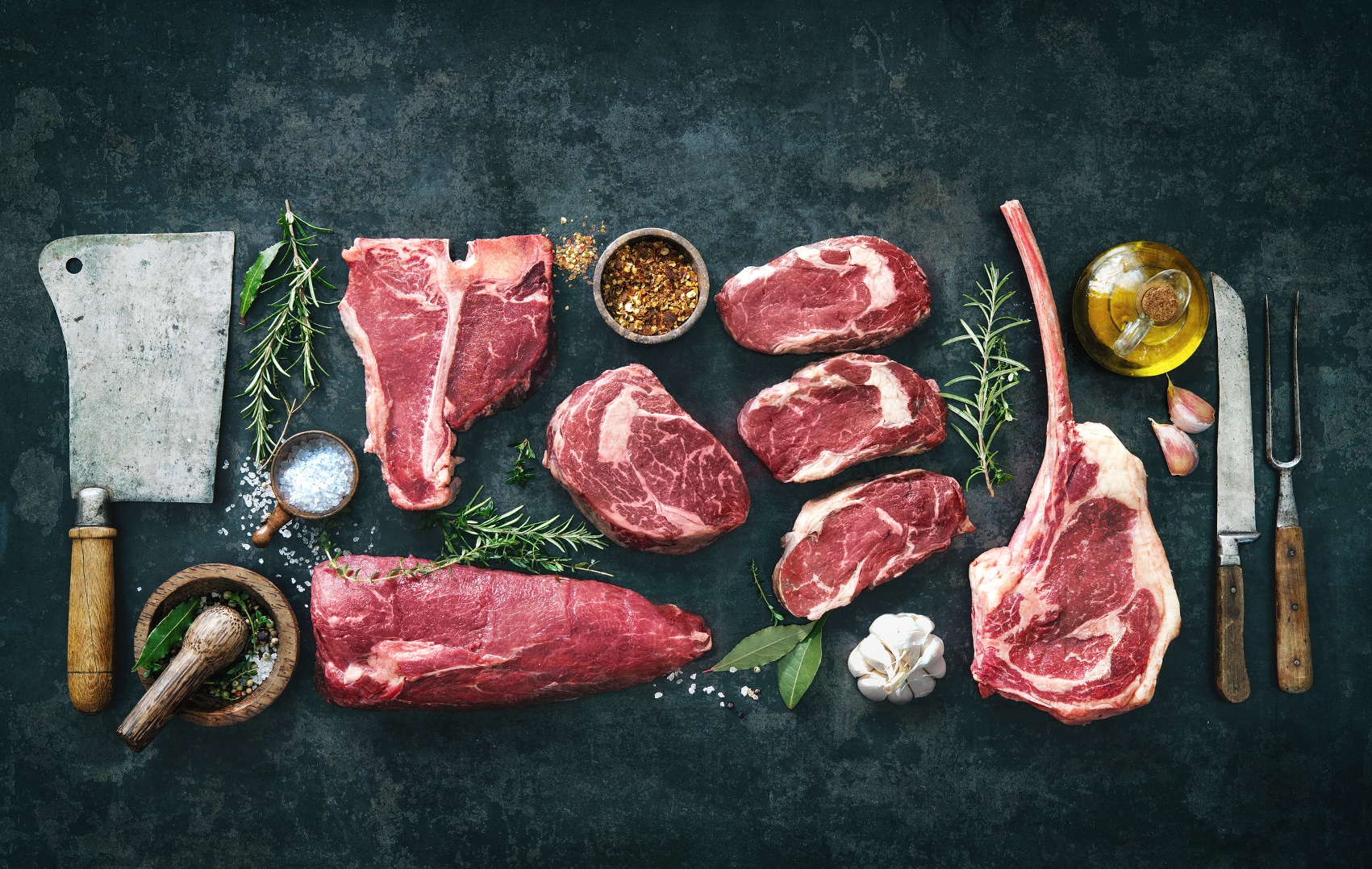
Storage tips: We suggest cooking or freezing your beef within three days of purchase. Keep meat tightly wrapped in its original packaging while storing it, or, if you’re freezing it, place it in a plastic food storage bag with as much air as possible pressed out. Frozen pieces of beef keep in a regular freezer for up to 12 months and ground beef for up to 4 months. Cooked meat, like leftovers, can be frozen for up to 3 months.
If you’re marinating beef before cooking it, keep it in a bowl or dish on the bottom shelf of your refrigerator to avoid contamination.
Now that you’ve been schooled on the ins and outs of some popular cuts of beef, we hope you’re even more excited about PA Beef Month! It’s a great time of year to fire up the grill — check out the PA Beef Council’s full library of recipes to find your new favorite weeknight dinner!
Looking for more? Follow along on the PA Beef Council’s Facebook page for info about raising beef in PA, mouthwatering meal ideas and creative recipes featuring local beef!
###
The Beef Checkoff Program was established as part of the 1985 Farm Bill. The checkoff assesses $1 per head on the sale of live domestic and imported cattle, in addition to a comparable assessment on imported beef and beef products. States may retain up to 50 cents on the dollar and forward the other 50 cents per head to the Cattlemen’s Beef Promotion and Research Board, which administers the national checkoff program, subject to USDA approval. Internal links within this document are funded and maintained by the Beef Checkoff. All other outgoing links are to websites maintained by third parties.
- Feature photo, and hanger steak, porterhouse steak, rib roast and strip steak photos: BigStock
- Chuck Arm Roast plus cooking photo: Dish Works
- All other photos: Pennsylvania Beef Council




